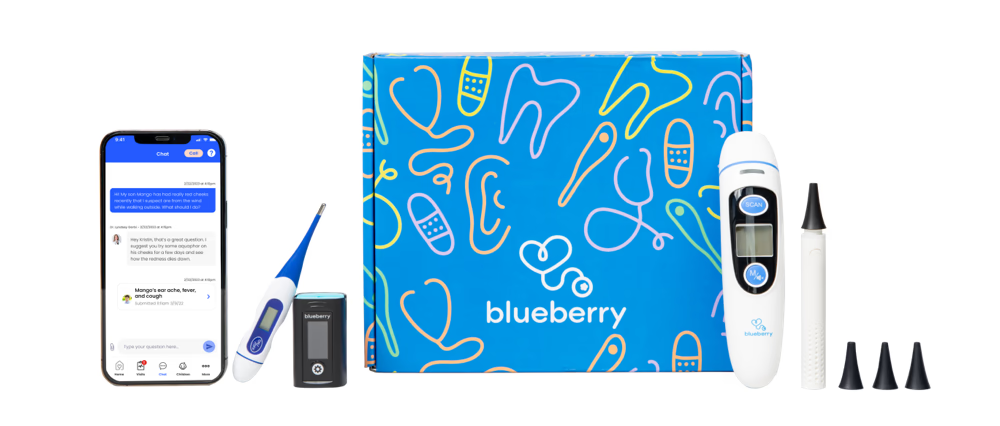Swimmer's ear, also known as otitis externa, is a common condition that affects many children, especially during the warm summer months when swimming is frequent.
It's an infection of the skin in the ear canal, which can be painful but is typically easy to treat and prevent. This guide, featuring insights from Dr. Deborah Gage from Blueberry Pediatrics, will provide essential information on recognizing, treating, and preventing swimmer's ear in your child.
Key Takeaways
- Swimmer's ear (otitis externa) is a painful condition in the outer ear canal caused by water retention after swimming.
- Early recognition of symptoms like severe ear pain, itching, and discharge is crucial for prompt treatment.
- Prevention involves keeping ears dry, using protective ear drops, and avoiding cotton swabs for cleaning to maintain proper ear hygiene.
Understanding Swimmer's Ear

Swimmer’s ear (otitis externa) differs from the middle ear infections.
This painful condition, which occurs in the outer ear canal, is especially prevalent in swimmers of all ages due to moisture remaining in the ear canal after swimming and sometimes showering or laying down underwater in a bathtub, softening the skin and creating an environment that encourages bacterial growth. Unlike middle ear infections, which occur behind the eardrum and are often linked to respiratory infections, swimmer’s ear doesn’t usually come with a fever.
Signs and Symptoms to Watch For
Recognizing the symptoms of swimmer's ear early is crucial for prompt treatment. These include severe ear pain, itching, discharge, redness, swelling, and temporary hearing loss.
The most obvious symptom is severe pain, especially when touching the outer ear or when your child tries to chew. You might notice that your child’s ear canal looks red and swollen. In some cases, drainage from the ear might occur. Other symptoms can include feeling fullness in the ear and reduced hearing if the ear canal is blocked. Most children with swimmer’s ear won’t have a fever.
Younger or nonverbal children may put their fingers in their ears or rub or touch them more often.
How is swimmer's ear diagnosed?
A doctor typically diagnoses swimmer's ear based on your child's signs and symptoms. They will also ask about your child's recent activities, such as swimming or using Qtips or headphones, to determine if they may have been exposed to water in the ear.
If you're a member of Blueberry Pediatrics, you'll use a digital otoscope provided to every Blueberry family to take videos of your child's ear canal. Our pediatricians will review the images for signs of an infection. Combined with their recent health history (e.g., swimming multiple times that week), the pediatrician will make a diagnosis and provide treatment guidance.
<div fs-richtext-component="cta" class="content_cta">
<div class="content-cta__title">
<div class="y-tex-xxs text-color-white">
Blueberry - Rated best for online pediatrics!
</div>
</div>
<div class="y-text-2xl text-color-white">
👩🏽⚕️ Chat With A Pediatrician About Your Child's Symptoms
</div>
<a href="https://app.blueberrypediatrics.com/join_blueberry_18a_cart?promo=blog100"
target="_blank" class="content-cta_btn w-button">
Get Started
</a>
<link rel="prefetch" href="https://app.blueberrypediatrics.com/join_blueberry_18a_cart?promo=blog100">
How is swimmer's ear treated?
The primary treatment for swimmer’s ear is to clear up the infection using prescription ear drops for 5-7 days containing antibiotics and sometimes combined with steroids. These drops help reduce inflammation and treat the infection.
Antibiotic ear drops will help reduce swelling and fight the infection. As with any antibiotic medication, parents should administer these drops as prescribed by their pediatrician to completion to help avoid additional complications.
Managing your child's ear pain
Swimmer's ear can cause your child's ear to be very sensitive to touch. To help alleviate this pain, you can administer over-the-counter pain medicine (such as Ibuprofen or Tylenol) as appropriate for your child's age.
How to prevent swimmer's ear

Preventing swimmer’s ear is mainly about keeping the ears dry and maintaining proper ear hygiene. Parents can try a few strategies before, during, and after swimming to prevent swimmer's ear effectively.
Dry ears thoroughly
Ensure your child’s ears are thoroughly dried after swimming. You can use the corner of a towel to gently wipe around the outer ear or even use a hair dryer on the lowest or coolest setting to dry the ear canal, especially if they are in the water for over an hour
Use protective ear drops
A homemade mix of equal parts white vinegar and clean filtered or bottled water can be instilled into the ears to help dry them out and maintain an acidic environment that prevents bacterial growth. You can also purchase these eardrops over the counter.
Be cautious with earplugs
While earplugs can be useful, they must fit perfectly. Poorly fitted plugs can trap water inside the ear, increasing the risk of infection.
Avoid using cotton swabs for ear cleaning
Inserting cotton swabs into the ear canal can injure the skin, increasing the risk of otitis externa (swimmer's ear).
Differences between swimmer's ear and middle ear infections
Is there a difference between swimmer's ear and a middle ear infection? Yes! Middle ear infections are the most common of the two, although children who swim frequently may experience swimmer's ear pretty regularly in the summer months.
Beyond frequency, how and where the ear gets infected is different. Swimmer's ear involves the outer ear and is associated with water exposure. It's typically painful to the touch.
Middle ear infections occur behind the eardrum and is often secondary to respiratory issues like a cold. It's less likely to cause severe pain when touching the ear.
Potential complications of Swimmer's ear
If left untreated, swimmer's ear can narrow the ear canal, making future infections harder to treat. In rare cases, the infection can spread to nearby tissues or even the bones at the base of the skull. Early treatment is key to preventing these serious complications.
Get care for your child's ear pain with Blueberry Pediatrics
Swimmer's ear is a common condition that can disrupt your child's summer fun. While there are steps that you can take to help prevent an infection, the pediatricians at Blueberry Pediatrics are here for you if one arises.
Blueberry Pediatrics, one of the largest pediatric practices in the US, offers 24/7, on-demand access to board-certified pediatricians. Our pediatricians can diagnose and treat many childhood symptoms and illnesses, including swimmer's ear, middle ear infections, pink eye, rashes, and so much more. Your peace of mind is just a click away - sign up.

Frequently Asked Questions About Swimmer's Ear
Can swimmer's ear be prevented by cleaning earwax?
Earwax is protective against swimmer's ear. It's best not to clear out earwax unless it's causing problems or obstructing the view of the ear canal during a medical examination.
What should I do if I suspect my child has swimmer's ear?
Consult with a pediatrician if your child shows symptoms of swimmer's ear. Treating this condition at home without professional guidance is generally not advisable.
How long does swimmer's ear last?
With proper treatment, symptoms should improve within a few days, but it's important to complete the entire course of treatment to ensure all the infection is cleared.
Is antibiotic ear treatment the only way to clear swimmer's ear?
Antibiotic ear drops are the first line of treatment a doctor prescribes to clear the infection. Your child's doctor may provide additional guidance on managing pain or reducing swelling.
When can my child swim again?
Usually, it is recommended to stay out of the water for a few days until the pain and drainage are resolved.








.svg)






.svg)
.svg)